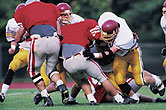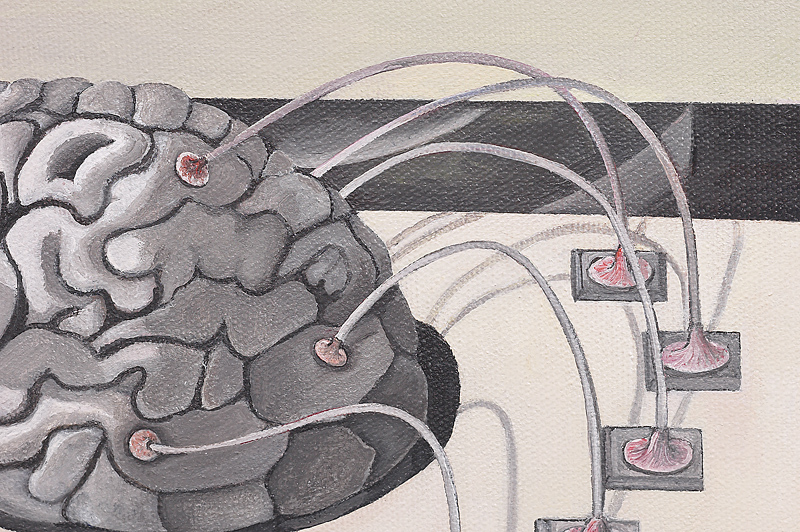
WEDNESDAY, Feb. 26, 2014 (HealthDay News) — A simple vision test given on the sidelines can help identify athletes who’ve suffered a concussion, a new study finds.
Researchers found that the test — known as the King-Devick, or K-D — was able to detect 79 percent of concussions among college athletes who were followed over a season. When the results were combined with those of two other screening tests, all of the concussions were caught.
The findings were released Wednesday by the American Academy of Neurology (AAN), ahead of its annual meeting this spring.
Experts said the study bolsters evidence that the K-D is a reliable way to help spot athletes’ head injuries — though the test, by itself, is not enough.
“People have been looking for quick, on-the-field screening tests,” said Steven Broglio, an athletic trainer and director of the NeuroSport Research Laboratory at the University of Michigan in Ann Arbor.
The new findings suggest the K-D is “one option,” said Broglio, who was not involved in the study. “But it’s not definitive, and you wouldn’t want to rely on this alone,” he added.
The K-D takes a minute or two, and it can be given by an athletic trainer, coach or even a parent right on the sidelines. It requires test-takers to read a few rows of single-digit numbers that are unevenly spaced, as quickly and accurately as possible. If they are slower to finish than they were on their “baseline” test — taken before the season starts — that’s a potential sign of a concussion.
There are other sideline screening tests already in use, including ones that test balance and short-term memory.
But the K-D test “fills a gap” by looking for vision-related problems, explained study co-author Dr. Steven Galleta, chair of neurology at NYU Langone Medical Center in New York City.
Concussions can cause a wide range of symptoms that are often subtle at first. Symptoms like worsening headache, dizziness, nausea, fatigue and confusion might not become obvious until hours after the knock to the head. Plus, even when athletes are suffering immediate problems, they might not tell anyone.
“Some athletes don’t recognize the symptoms, and some try to hide them because they want to stay in the game,” Galleta said.
A number of professional groups, such as the AAN and National Athletic Trainers’ Association, say that athletes who’ve potentially suffered a concussion should be taken out of the game or practice immediately.
For the new study, Galleta and his colleagues followed 217 athletes at the University of Florida — including male football players, and female lacrosse and soccer players.
At the start of the season, they all took the K-D, as well as two other sideline screening tests: the BESS, which measures balance; and the SAC, which measures abilities such as short-term memory (asking the athlete to memorize and recall five words) and “orientation” (asking the player to name the day, month and year).
Over one season, 30 athletes were diagnosed with a concussion. And when the researchers looked at their sideline test results, 79 percent showed slower times on the K-D, compared with their pre-season performance. Adding the SAC and BESS results improved the detection rate to 100 percent.
Part of the appeal of the K-D is its simplicity; it can be used by “laypeople,” including coaches and parents, Galleta noted. That raises the question of whether it can be used in high school and youth sports — where there is often no athletic trainer or other health professional on the sidelines.
Studies are currently testing the K-D’s usefulness for kids as young as 6, said Dr. Laura Balcer, a professor of neurology at NYU Langone who also worked on the study.
But regardless of what the K-D or other screening test shows on the sidelines, Balcer said there is “no substitute” for parents’ judgment. If they notice any potential signs of concussion after a game or practice, they should take their child to the doctor immediately, she said.
“Parents know their kids best,” Broglio agreed. “If you notice a change in their behavior, it’s probably worth it to have them evaluated.”
According to the U.S. Centers for Disease Control and Prevention, more than 173,000 U.S. children and teens land in the ER each year because of a concussion suffered during sports or recreational activities, like bike riding.
But the overall number — including kids not seen in the ER — is probably much larger: the CDC estimates that across age groups, up to 3.8 million Americans sustain a sports-related concussion each year.
In general, experts say kids with concussions should be symptom-free and get a doctor’s OK before returning to sports. The biggest concern is that, if they sustain another knock to the head while they are still recovering from the first concussion, they could suffer so-called second-impact syndrome — which can cause potentially fatal bleeding inside the skull and brain swelling.
The data and conclusions of research presented at meetings should be viewed as preliminary until published in a peer-reviewed journal.
More information
The U.S. Centers for Disease Control and Prevention has more on concussion in youth sports.
Copyright © 2025 HealthDay. All rights reserved.

